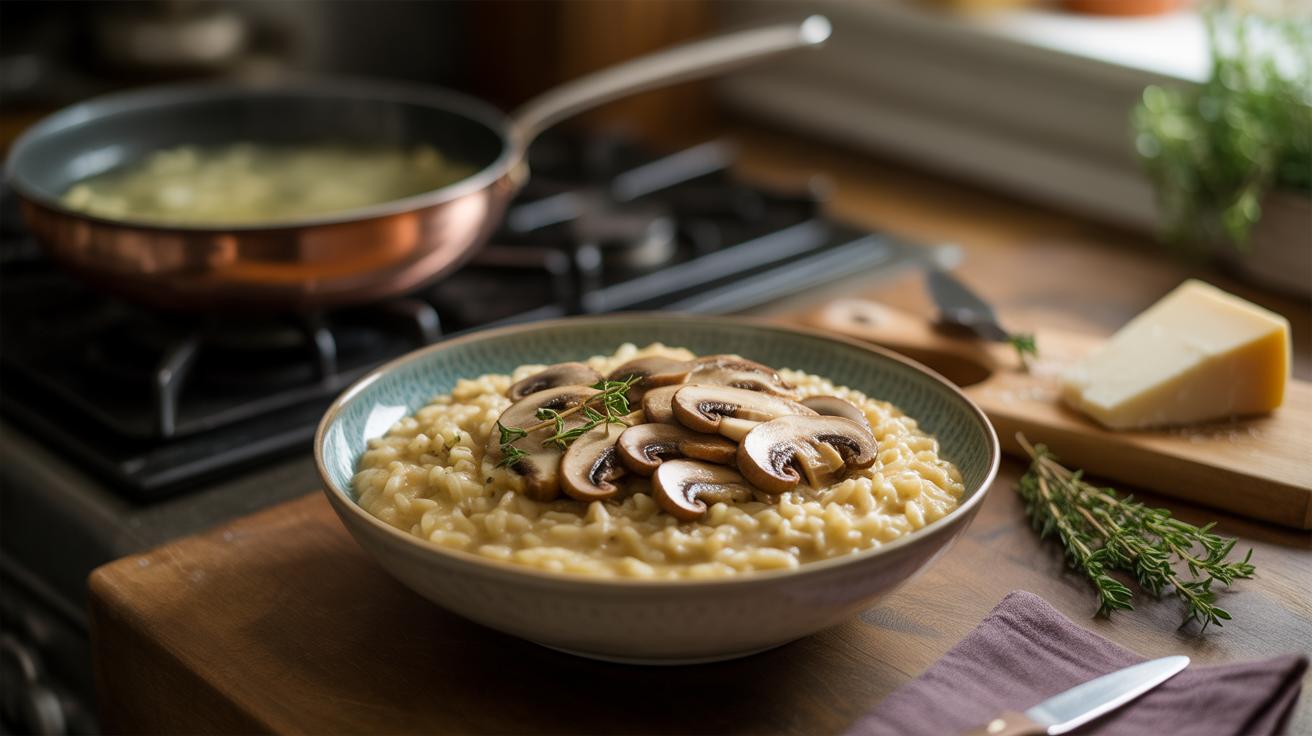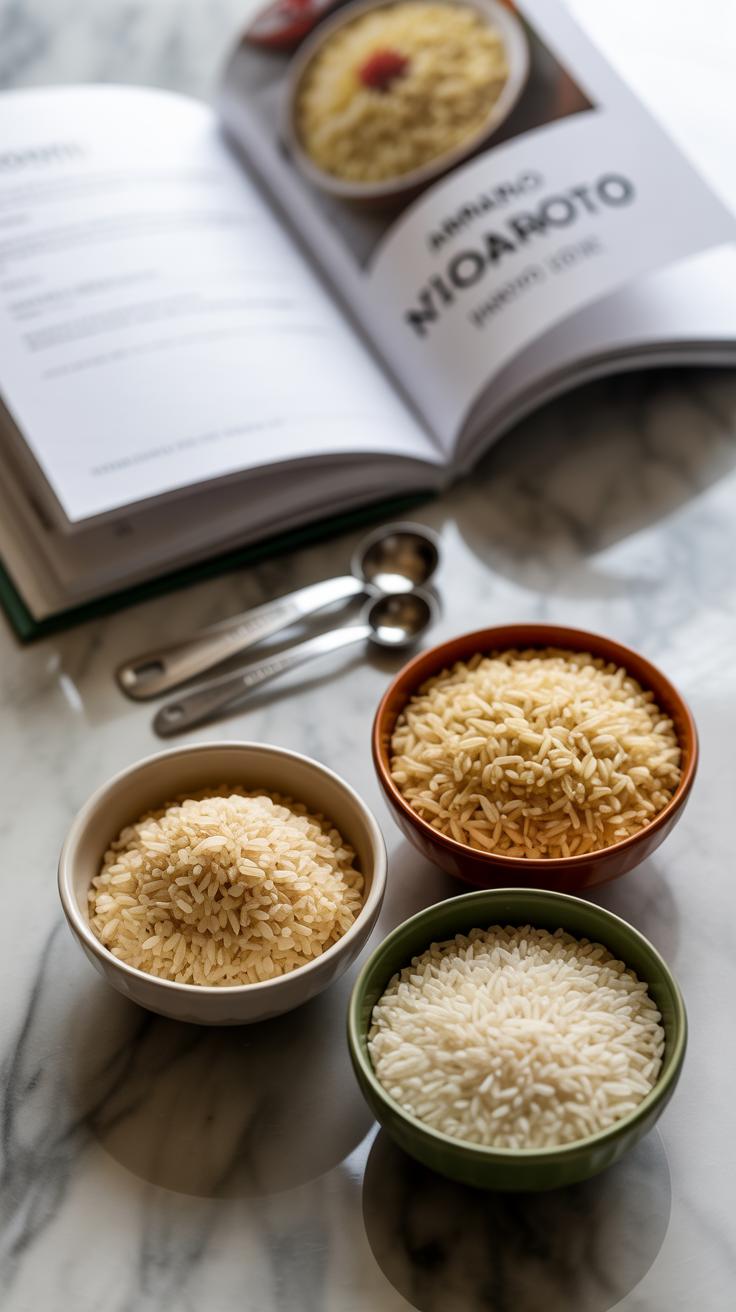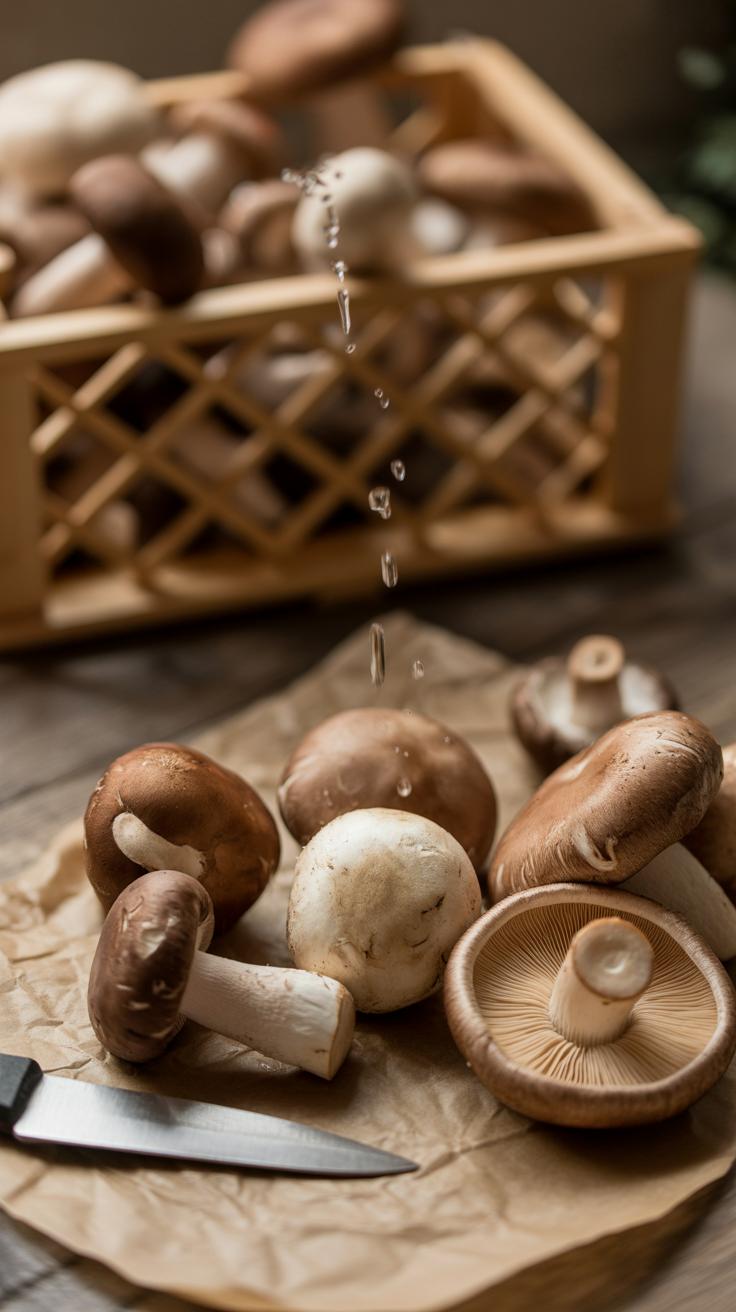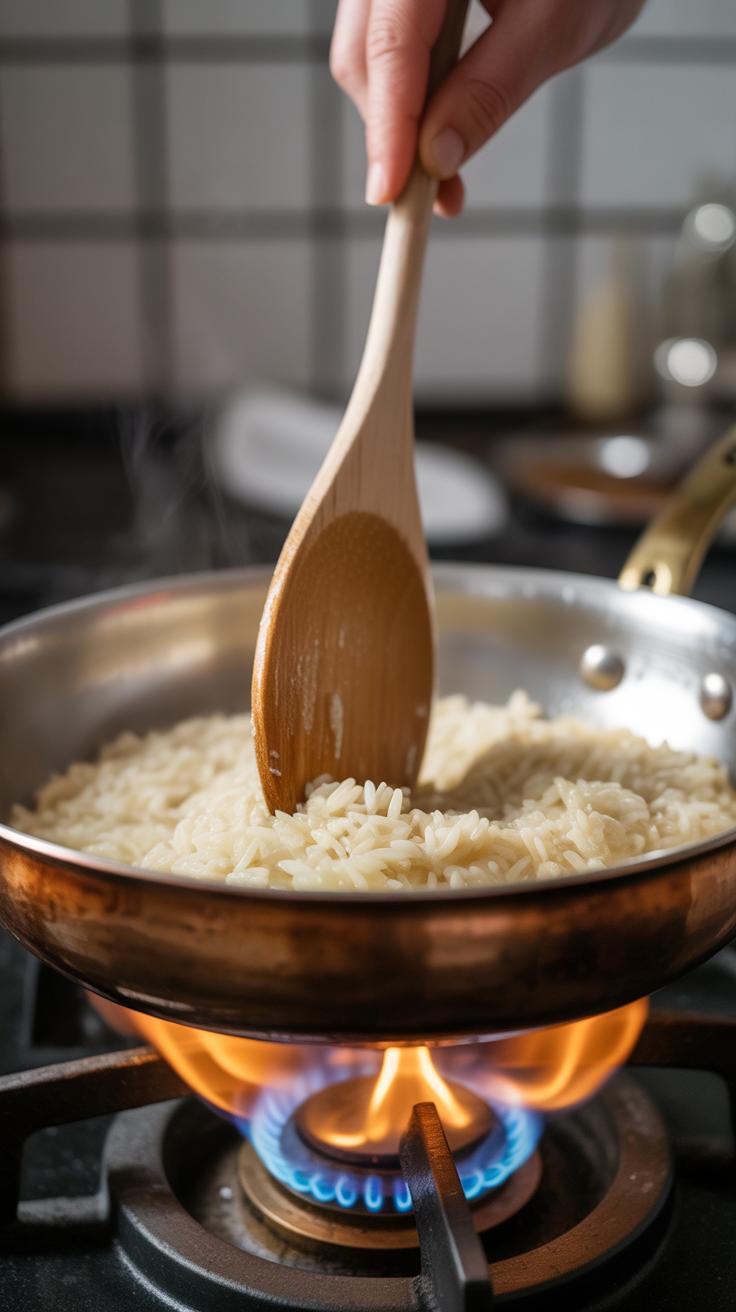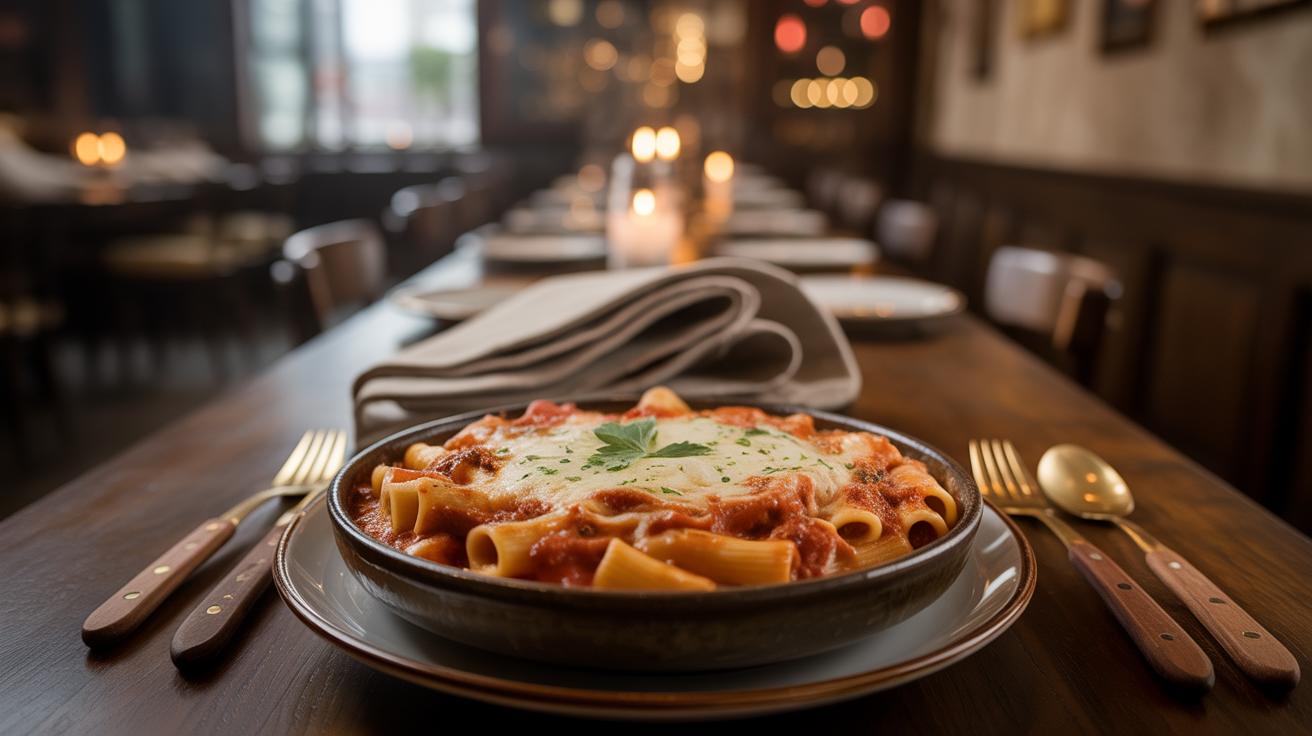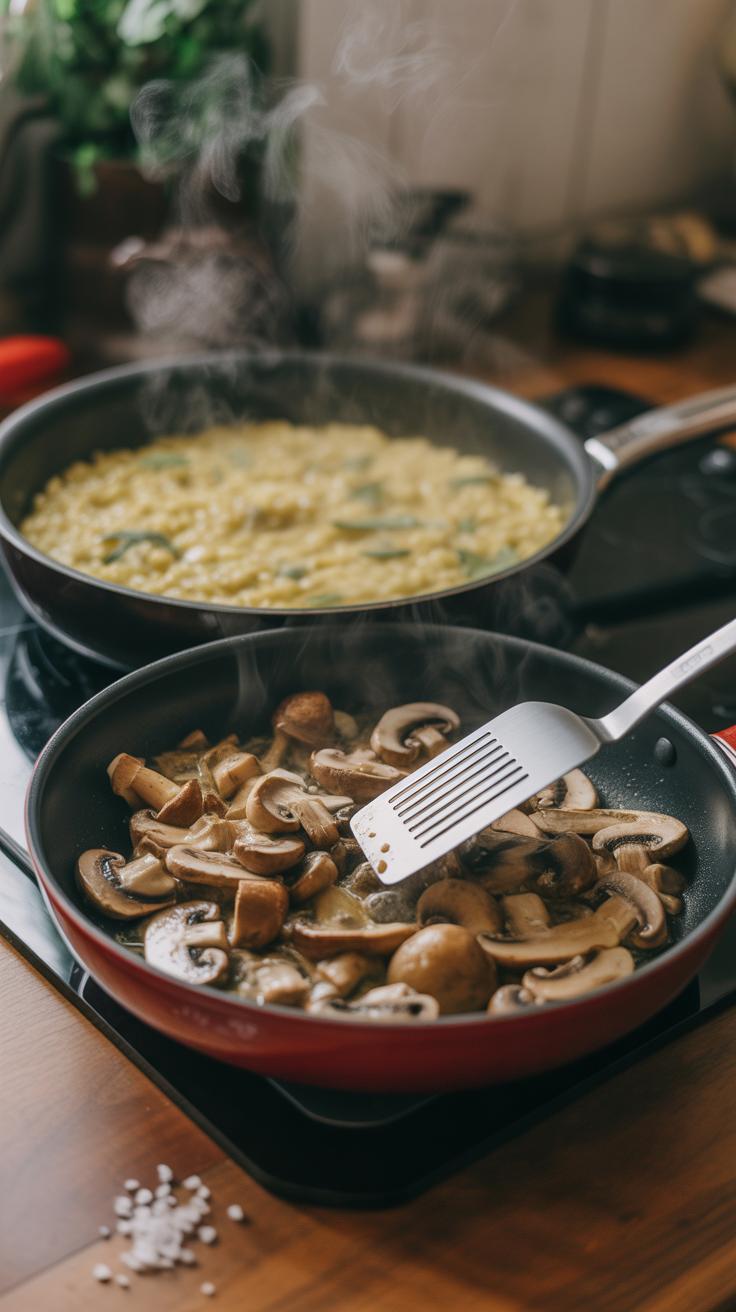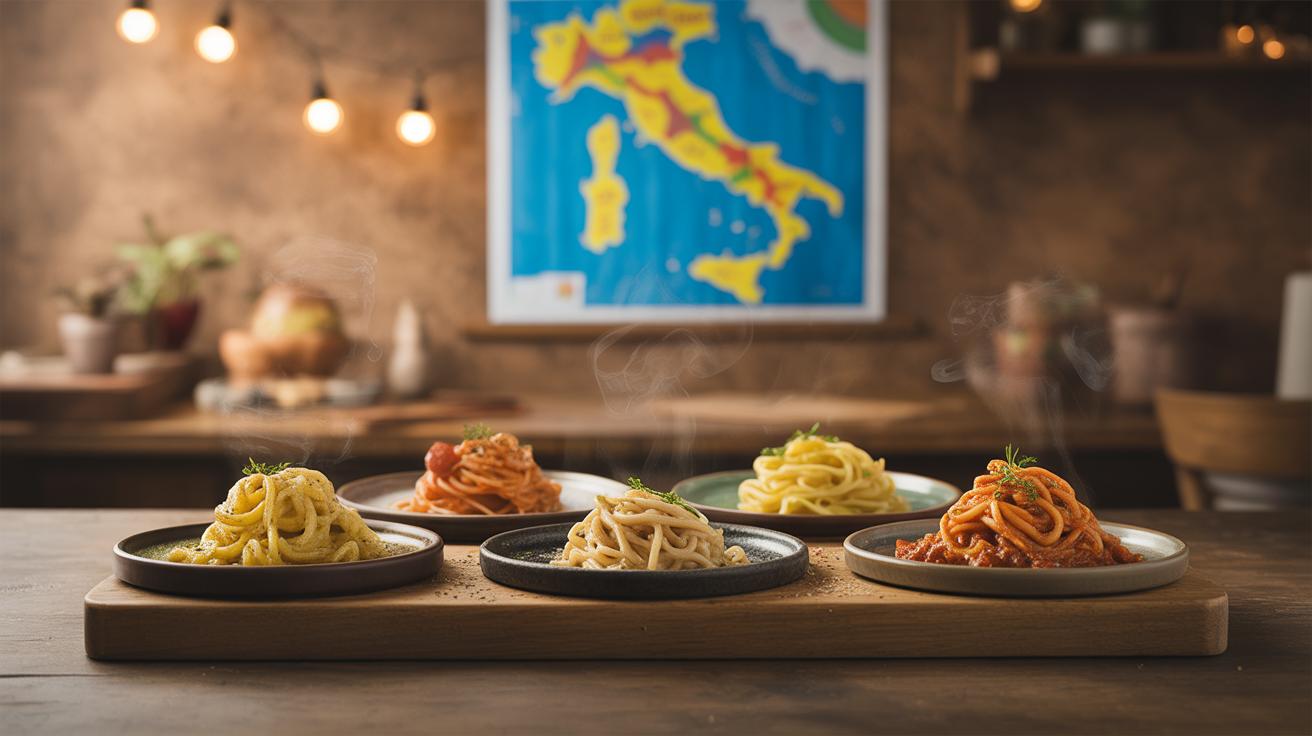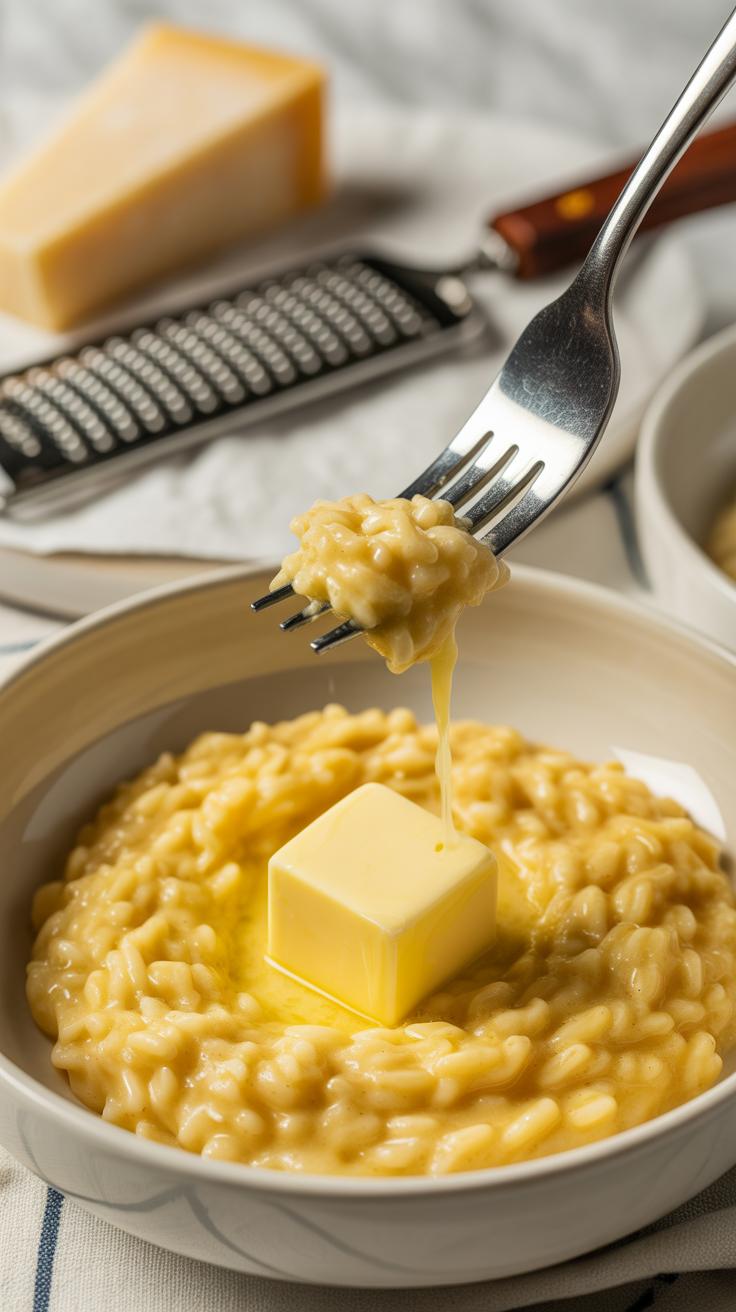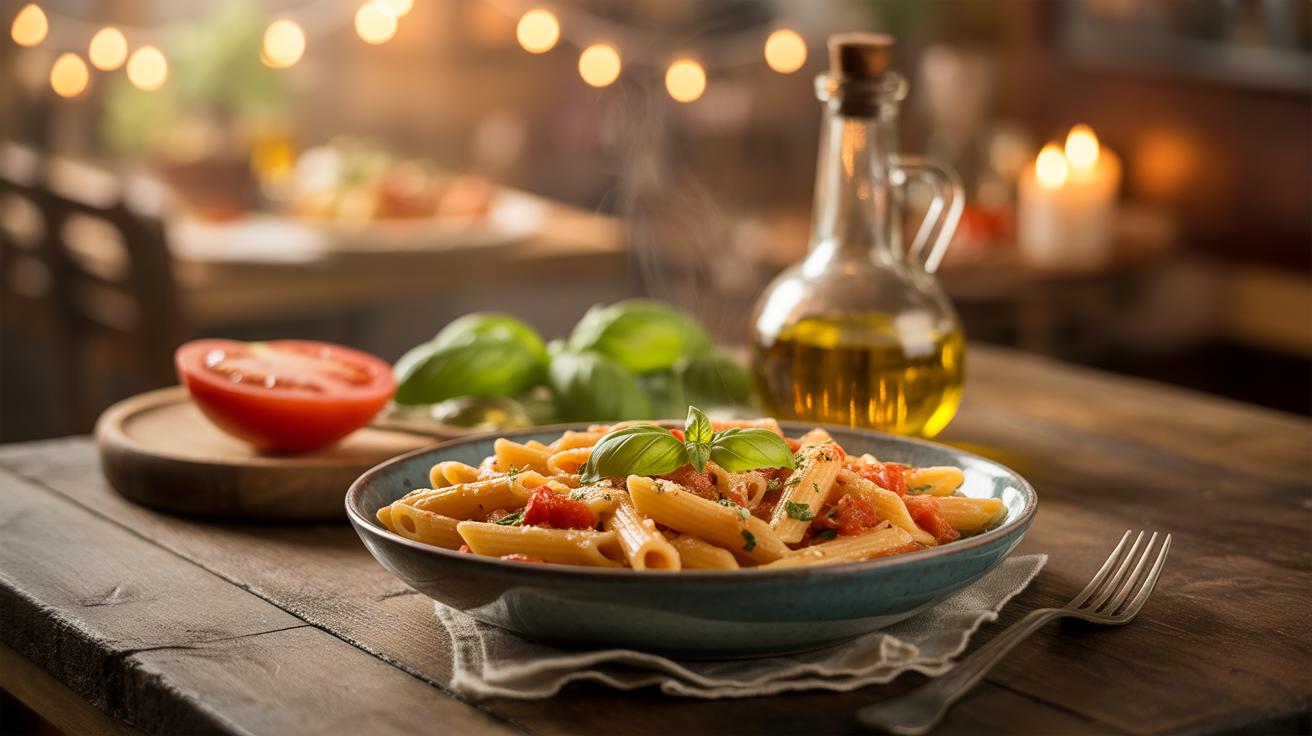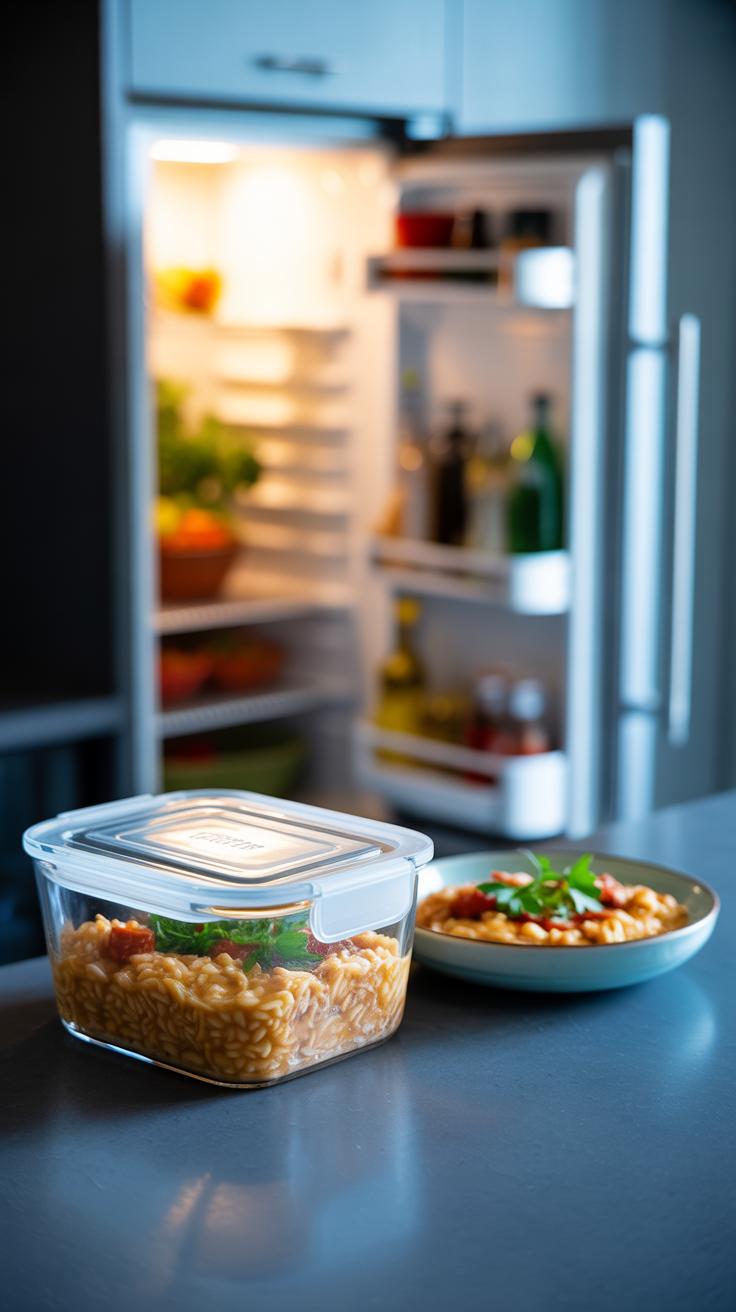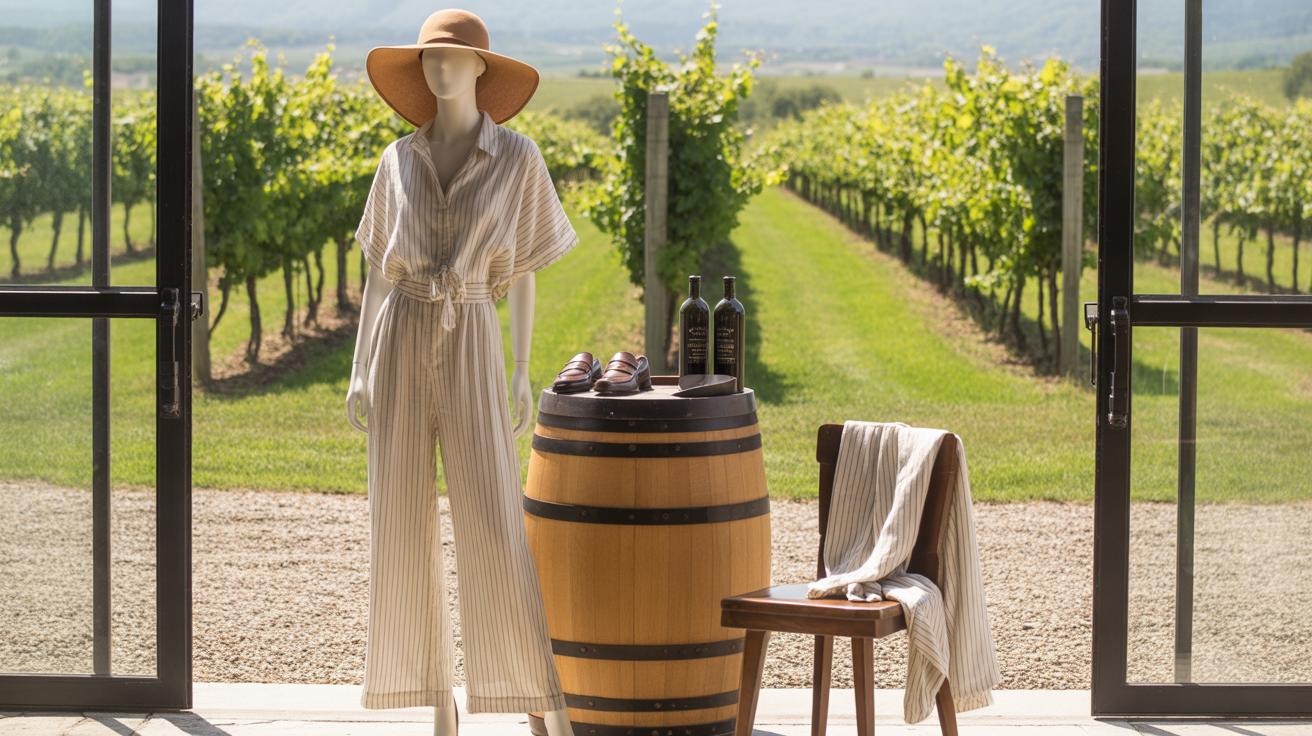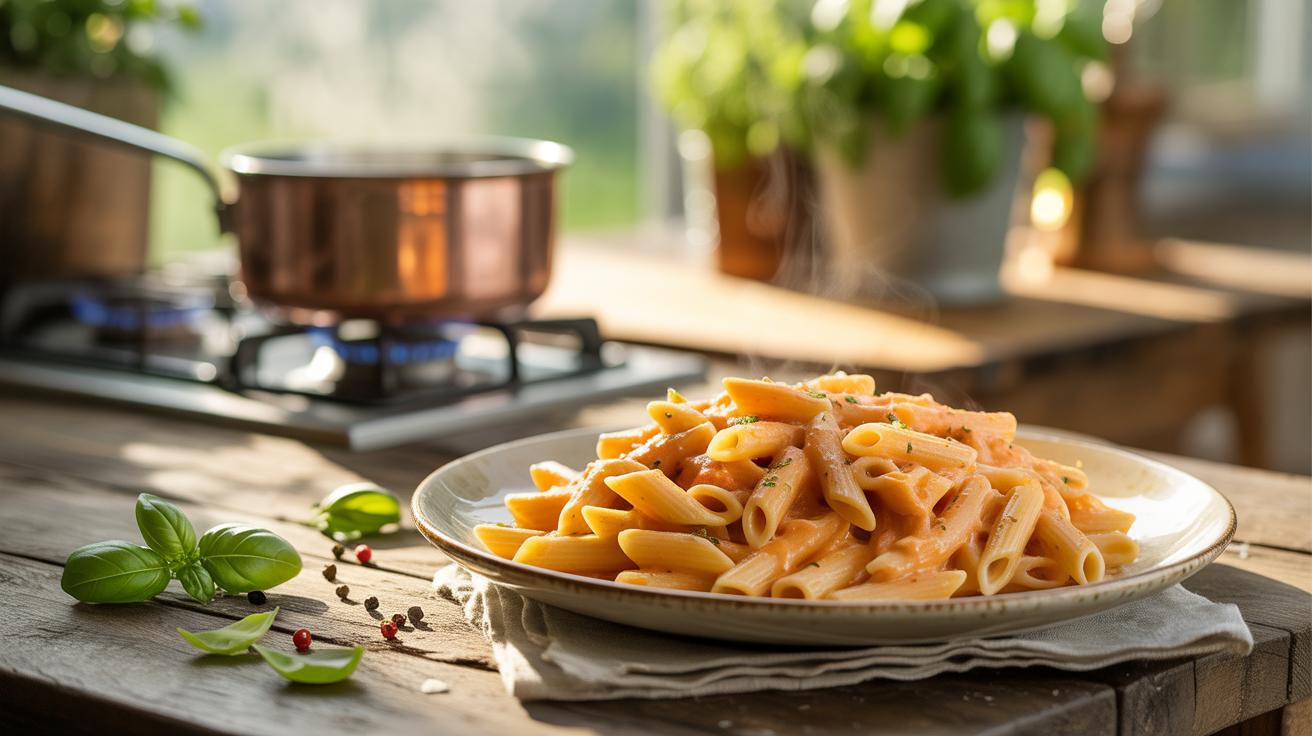Introduction
Mushroom risotto is a classic Italian dish that combines creamy rice with the rich, earthy flavors of mushrooms. You can make this dish at home and impress your family and friends with your cooking skills. It uses simple ingredients like Arborio rice, mushrooms, broth, and Parmesan cheese. Learning to make mushroom risotto lets you appreciate the care and attention this delicious meal needs.
This article explores everything you need to know about making creamy mushroom risotto. From picking the right rice and mushrooms to cooking techniques that create the perfect creamy texture, we will guide you through mastering this dish. You will also find tips that help make your risotto rich in flavor and ideal for any occasion. Let’s start your journey to making restaurant-quality mushroom risotto right in your kitchen.
Understanding Risotto and Rice Selection
Risotto is more than just cooked rice with broth added. It’s a careful balancing act of stirring, heat, and timing that results in a creamy, rich dish without using cream. But the heart of every good risotto is the rice you use and why that choice matters.
Rice varieties like Arborio, Carnaroli, and Vialone Nano each bring different qualities. They all belong to the short- to medium-grain family and contain lots of starch, which is key. This starch, released during cooking, creates the risotto’s signature texture—soft, yet still with a bite.
Arborio is probably the most common. It’s easily found at stores and has a nice balance of creaminess and chew. Carnaroli is less known but often preferred by chefs for its slightly firmer texture and ability to hold up better during longer cooking. Vialone Nano is smaller-grained and absorbs liquids quickly, giving a silkier but lighter result that some find more delicate.
Picking the right rice isn’t just a technical step. It shapes your entire experience, from how the mushrooms mingle with the rice to the dish’s final feel on your palate. You might even find yourself favoring one over the others, depending on how you like your risotto—more buttery and soft, or with a bit more structure.
What Makes a Rice Suitable for Risotto
There’s a specific reason risotto rice differs so much from, say, long-grain varieties used for pilaf. It all boils down to starch content and grain size.
- High starch content: This is crucial. The starch released during slow cooking makes the dish creamy without needing anything extra.
- Grain size: Short to medium grains retain some firmness. They don’t turn mushy even after many minutes of stirring.
- Outer coating: The rice grain’s surface matters too. It helps control the release of starch gradually.
Using the wrong rice can lead to an unbalanced risotto—too dry or too mushy. The texture you aim for is delicate but not sloppy, with each grain fully coated in that subtle, creamy sauce.
Different Rice Varieties for Mushroom Risotto
Choosing your rice variety affects not only texture but also how the mushrooms interact with the risotto. Each type behaves differently:
- Arborio: It’s often the starter rice. The texture leans on the creamier side, which matches well with deep, earthy mushroom flavors. But it can sometimes feel a bit heavy if overcooked.
- Carnaroli: Preferred if you want more control. It’s less prone to becoming mushy, even if you get a little distracted while stirring. Its resilience gives a nice contrast to tender mushrooms.
- Vialone Nano: This one is for a lighter, more delicate risotto. It absorbs broth quickly and creates a silkier mouthfeel, which can let the mushroom’s subtlety shine without overwhelming it.
Each variety has a character, and the one you pick might depend on how you want the final dish to feel. Want something hearty and rich? Arborio might fit. Prefer a little tension in every bite? Carnaroli could be your friend. Or maybe, for a refined touch, Vialone Nano is worth trying. Cooking risotto is as much about feel as technique, and the rice you pick plays a starring role in that story.
Selecting and Preparing Mushrooms
Types of Mushrooms Ideal for Risotto
When it comes to mushroom risotto, the type of mushroom you choose can really make a difference. Button mushrooms are common and mild; they add texture without overpowering the dish. If you want a bit more depth, cremini—also called baby bellas—bring a richer, earthier flavor. Shiitake mushrooms offer a stronger, almost smoky note, which can complement the creamy rice well, though they may dominate if you’re looking for subtlety. Porcini mushrooms stand out for their nutty, woodsy aroma and are often dried and rehydrated to deepen the taste. Using a mix sometimes works best because it layers flavors, but it depends on your preference—do you want your risotto to feel bold or more delicate? I remember once trying only porcini and it felt a bit heavy, but blending them with cremini lightened things up nicely.
Cleaning and Cutting Mushrooms for Cooking
Mushrooms are like little sponges, which means they soak up water easily. Cleaning them too aggressively can leave your risotto watery, so I usually avoid rinsing under the tap. Instead, gently wipe each mushroom with a damp cloth or use a soft brush to remove dirt. If you have to rinse, do it quickly and dry them well. How you slice or chop matters too; uniform pieces cook faster and evenly. Thin slices work well if you want the mushrooms almost folded into the risotto, while bigger chunks give a meatier bite. Sometimes I chop cremini finely but slice shiitakes thinner to balance texture. You might wonder if leaving the stems on is okay—usually, trimming tough ends is best, especially with shiitakes, since the stems can be fibrous. But don’t toss those stems—they add great flavor to stocks.
Stock and Broth Choices for Risotto
Using Stock to Build Flavor
When making mushroom risotto, the choice of stock can make or break the dish. Stock does more than just add moisture—it carries much of the flavor throughout the cooking process. As you gradually add stock, the rice slowly absorbs it, which allows the taste to deepen and become more complex. Without a well-chosen stock, the risotto can feel flat or dull, no matter how fresh your mushrooms are.
A good mushroom or vegetable stock enriches your risotto by layering subtle earthy notes and umami. This way, the mushrooms don’t stand alone; they’re supported by the broth’s character, creating that comforting, creamy texture and taste you expect. Think of stock as the flavor backbone, coaxing each grain of rice to shimmer with taste as it cooks.
Homemade vs. Store-Bought Broth
Some people swear by homemade stock, and I can see why. Making your own mushroom or vegetable stock lets you control ingredients, seasoning, and freshness. When I make mushroom stock myself, I toss in a mix of fresh mushrooms, onion, garlic, herbs, and simmer them slowly. The result feels brighter and often richer than anything you find on shelves. There’s an honesty to homemade stock; you can taste the care invested.
On the other hand, store-bought broths offer undeniable convenience. If time is scarce, reaching for a quality broth can save the day. Though store options tend to lean saltier or sometimes bland, choosing brands with a clean, natural taste improves the risotto outcome. You might want to adjust seasoning or dilute a strong broth slightly. Sometimes, blending a bit of homemade stock with store-bought can strike a nice balance—more flavor without extra effort.
Ultimately, the choice boils down to what fits your kitchen habits and flavor expectations. What matters most is that the stock complements your mushrooms, giving risotto its signature warmth and creaminess.
Basic Risotto Cooking Techniques
To start your risotto, the very first step involves toasting the rice. You’ll want to heat some butter or oil in your pan until it’s shimmering gently. Then add your arborio or carnaroli rice. Stir it around for a few minutes—this toasting slightly coats each grain, helping the rice maintain its shape later, while also adding a subtle nuttiness. I’ve often skipped this and felt the difference; it’s surprisingly crucial, even if it seems like just an extra step.
Toasting Rice and Adding Wine
Once the rice looks translucent at the edges but still white in the center, pour in a splash of dry white wine. This step’s flavor impact is bigger than you might expect. The acidity from the wine cuts through the richness and adds depth. Let the alcohol cook off until the liquid almost evaporates—that’s key to avoid harshness.
Adding Broth Gradually and Stirring
Here’s where patience really pays off. Instead of dumping all your broth in at once, ladle it in slowly—about half a cup at a time. Stir gently but frequently, allowing the rice to absorb the liquid before adding more. This slow process draws out the starch from the grains, the very thing that gives risotto its creamy texture without any cream added. I sometimes wonder if stirring so much actually makes a difference, but honestly, the texture tells the tale. Too little stirring, and the rice can feel sticky or unevenly cooked. Too much, and well, it’s just part of the ritual—you kind of get used to the rhythm.
Keep adding broth until the rice is tender but still has a slight bite at the center. This usually takes around 18 to 20 minutes. The consistency should be loose and creamy, almost like a thick porridge that spreads slightly when spooned. It may seem fussier than other methods, but once you get a feel for the timing, it’s surprisingly manageable—and rewarding.
Cooking Mushrooms and Combining with Risotto
Sautéing Mushrooms for Maximum Flavor
Cooking mushrooms separately before adding them to your risotto often brings out their best qualities. Toss sliced mushrooms into a hot pan with a bit of oil or butter, making sure not to crowd the pan—too many pieces at once and they’ll steam instead of brown. You’re aiming for a deep, golden color and a slightly crisp edge, which adds texture when mixed into the creamy risotto.
Season them lightly during cooking, but don’t overdo it. A pinch of salt helps draw out moisture and intensifies their aroma. You might notice the smell—the caramelized edges create a rich, inviting scent that hints at the flavor inside. Sometimes, I like to add a splash of white wine or a touch of garlic near the end to lift the taste just a notch.
Mixing Mushrooms into the Risotto
Figuring out when to mix the mushrooms in can feel tricky. If you add them too early, during stock absorption, they may lose their texture and become mushy. I find it works better to stir them in once the risotto is just about cooked—when the rice is creamy but still firm to the bite.
Gently folding the sautéed mushrooms in allows them to blend with the rice without losing their identity. The heat from the risotto warms them through, merging flavors without overcooking. Sometimes, I hold back a few mushroom pieces for garnish—giving a slight contrast in temperature and bite.
Have you noticed how mushrooms soak up flavors? Mixing them late means they keep their savory notes while embracing the warmth and silkiness of the risotto. It’s a balancing act. You want their earthy flavor to shine without overpowering or disappearing into the dish.
Finishing Touches With Cheese and Butter
The final step in making mushroom risotto, often called mantecatura, is where it all comes together. This is when you stir in cold butter and grated cheese off the heat. It sounds simple, but this step truly enriches the risotto’s texture, making it creamy and silky without being greasy or heavy. If you rush it or add these ingredients while the risotto’s still boiling, you risk losing that perfect balance between creamy and firm.
Choosing the Right Cheese
Parmesan is the classic choice here—and for good reason. It melts smoothly and adds a subtle salty depth that complements the earthiness of mushrooms. You might also try Grana Padano or even Pecorino Romano if you prefer a stronger, tangier flavor. The key is to use a cheese that melts evenly and doesn’t overpower the dish. Some cheeses might feel too clumpy or oily. So, sticking with a hard cheese like Parmesan often gives you that richer, melt-in-your-mouth sensation without distracting from the risotto itself.
How to Properly Stir in Cheese and Butter
To get that glossy texture, take the pan off the heat first. Add small cubes of cold butter and a handful of finely grated cheese. Stir gently but firmly—almost like coaxing the risotto to blend with the butter and cheese until it feels smooth and slightly elastic. Avoid vigorous stirring, which can break the rice grains. It works best if the butter is cold because it helps emulsify the sauce, thickening it naturally as you stir.
Sometimes, I get tempted to throw everything in while cooking, but taking this extra minute off heat really changes the outcome. You might wonder if there’s an exact amount of butter or cheese to use, but honestly, it depends on taste. Experiment a bit; you’ll find your own sweet spot where the risotto glows with indulgence but stays balanced.
Serving and Storing Mushroom Risotto
Serving Mushroom Risotto at Its Best
Risotto is a dish that really shines when served fresh. The moment you finish stirring in that final bit of butter and cheese, it’s time to plate up. Waiting too long causes the rice to absorb more liquid and thicken, which can change the texture in ways you might not want—sometimes the softness shifts toward mushy. Ideally, you want it creamy but still with a slight bite.
If you want to add a little something extra to the presentation, simple garnishes work wonders. A sprinkle of chopped fresh parsley or chives brightens the look and adds a fresh note. Sometimes, I like to shave a bit of Parmesan on top just before serving, for that subtle salty crunch that makes people pause. Toasted pine nuts or a few drops of good-quality truffle oil can make it feel special, too—though that’s more of a personal preference, really.
Storing and Reheating Tips
Leftover risotto? Yes, it happens, though it’s tricky. Store it in an airtight container and place it in the fridge within two hours of cooking to keep bacteria at bay. It won’t keep forever—about two days is the max if you want decent texture and flavor.
When reheating, the goal is to bring back that creaminess without turning it into a gluey mess. I find gently warming it in a pan on low heat works best, stirring frequently. Adding a splash of broth, or even water, helps loosen the rice. Microwave works too but be cautious; it can dry out or make parts of the risotto clumpy. Stirring halfway through can help avoid hot spots.
Do you want to revive it with butter or cheese again when reheating? Sure, that can help, but it’s a bit of a gamble. Sometimes it lifts the dish, sometimes not. Honestly, if you want risotto at its peak, it’s best not to overthink leftovers too much. Eat it fresh, enjoy it, and maybe just plan for smaller portions next time.
Variations and Flavor Enhancements
When it comes to mushroom risotto, the base is just the beginning. You can easily shape the dish to suit your mood or what you have on hand. Adding fresh herbs like thyme or parsley gives risotto a subtle lift—thyme’s earthiness pairs naturally with mushrooms, while parsley adds a fresh snap that lightens the richness. Garlic also plays a quiet but effective role, especially if sautéed gently with the mushrooms at the start. Just be mindful not to overpower the delicate balance.
There’s also room for a few indulgent touches. A drizzle of truffle oil added at the end can nudge the dish into something quite special, but don’t go overboard. Less can be more with such a potent flavor. Mixing mushroom types changes things too; combining cremini, shiitake, and even porcini can give your risotto deeper complexity and texture that a single variety might miss.
You might try stirring in a splash of cream or a knob of butter toward the end. It’s not traditional for all risotto lovers, but it does make for a silkier finish, one that feels almost comforting on a chilly evening. Experimenting with these tweaks is really about finding what suits you—the flavor may shift, but the heart of mushroom risotto stays intact, which is part of why it’s such a great dish to revisit again and again.
Conclusions
Making mushroom risotto at home might seem challenging, but with the right approach, it becomes a rewarding experience. The key is choosing quality ingredients, practicing patience, and stirring constantly to release the rice’s natural starches. This care creates the creamy texture that defines a great risotto. With each step, you build flavors that merge beautifully for a satisfying meal.
By mastering the basics and applying the tips shared in this article, you’ll develop confidence in cooking mushroom risotto. Your efforts will result in a delicious, hearty dish that showcases the charm of Italian cooking. Enjoy experimenting with mushrooms and seasonings to create your unique version. Your kitchen will soon be filled with aromas that invite everyone to share and savor your culinary creation.

